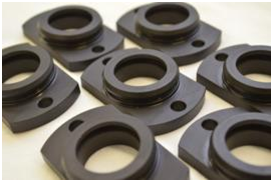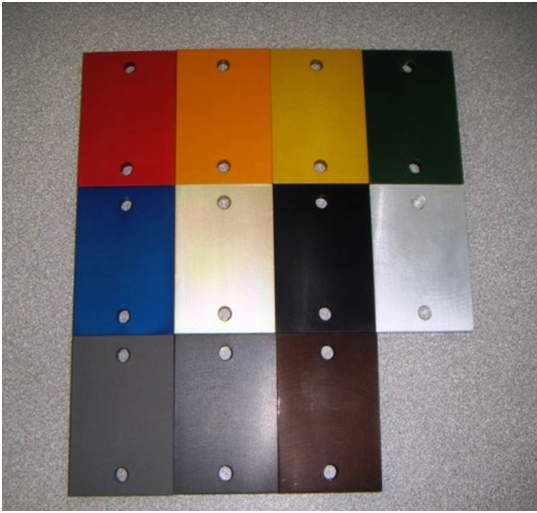ANODIZING

Anodizing is an electrochemical process that converts the aluminum surface into a decorative, durable, corrosion-resistant, anodic oxide finish.
The anodic oxide structure originates from the aluminum substrate and is composed entirely of aluminum oxide. This aluminum oxide is not applied to the surface like paint or plating, but is fully integrated with the underlying aluminum substrate, so it cannot chip or peel. It has a highly ordered, porous structure that allows for secondary processes such as coloring and sealing.
Anodizing is accomplished by immersing the aluminum into an acid electrolyte bath and passing an electric current through the medium. A cathode is mounted to the inside of the anodizing tank; the aluminum acts as an anode, so that oxygen ions are released from the electrolyte to combine with the aluminum atoms at the surface of the part being anodized. Anodizing is, therefore, a matter of highly controlled oxidation—the enhancement of a naturally occurring phenomenon.
BENEFITS OF ANODIZING
The unique anodized finish is the only one in the metals industry that satisfies each of the factors that must be considered when selecting a high performance aluminum finish:


Durability.
Most anodized products have an extremely long life span and offer significant economic advantages through maintenance and operating savings. Anodizing is a reacted finish that is integrated with the underlying aluminum for total bonding and unmatched adhesion.Color Stability.
Exterior anodic coatings provide good stability to ultraviolet rays, do not chip or peel, and are easily repeatable.Ease of Maintenance.
Scars and wear from fabrication, handling, installation, frequent surface dirt cleaning and usage are virtually non-existent. Rinsing or mild soap and water cleaning usually will restore an anodized surface to its original appearance. Mild abrasive cleaners can be used for more difficult deposits.Aesthetics.
Anodizing offers a large increasing number of gloss and color alternatives and minimizes or eliminates color variations. Unlike other finishes, anodizing allows the aluminum to maintain its metallic appearance.Cost.
A lower initial finishing cost combines with lower maintenance costs for greater long-term value.Health and Safety.
Anodizing is a safe process that is not harmful to human health. An anodized finish is chemically stable, will not decompose; is non-toxic; and is heat-resistant to the melting point of aluminum (1,221 degrees F.)
Since the anodizing process is a reinforcement of a naturally occurring oxide process, it is non-hazardous and produces no harmful or dangerous by-products.
Types of Anodizing
- Clear / White anodize
- Black Anodize
- Multi-colored Anodize
- Hard Clear/Gray Anodize
- Hard Black Anodize
